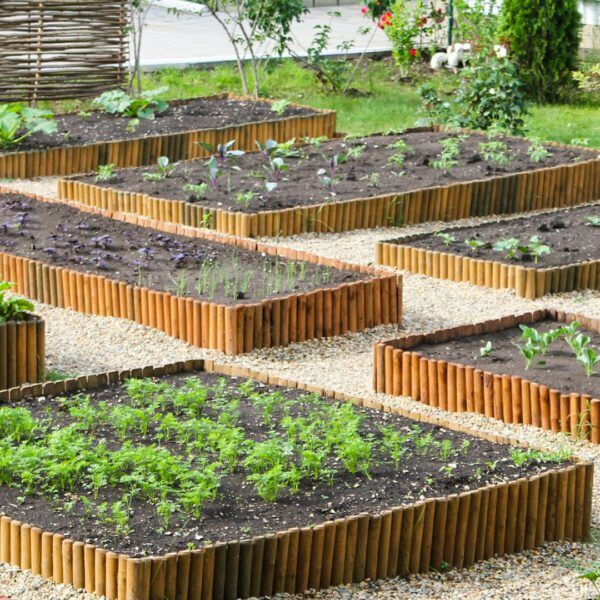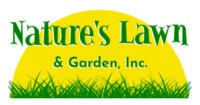Raised Bed Gardening
Have You Tried Raised Bed Gardening?

Planting in raised beds is similar to container gardening, using a really BIG container. Before you get started, you’ll want to plan ahead for success and to be sure your project is manageable.
What material should I use for my raised bed?
While you can use just about any large container for a raised bed, they’re typically made out of wood, metal, brick, or concrete. Treated lumber will hold up better over time, but harmful chemicals used to treat it can leach into your soil. (If using reclaimed pallet wood, look for a stamp that says “HT” which means “heat treated,” which is chemical free) Cedar and redwood are attractive and naturally resistant to rot, but will eventually break down over time. Metal and concrete are better permanent options.
How big should my raised bed be?
One common mistake gardeners make is planting a bed that is too large or too small for their needs. You’ll want to be able to comfortably reach across your raised bed to work in it, and for it to be deep enough to accommodate the root depth of your plants. When determining the right size bed and proper spacing, think of how the plant will look at full maturity. Check your seed packets for growing height and space requirements.
Where should my raised garden bed go?
One of the most significant things to consider is the placement of your bed. Unless you’re specifically planting a shade garden, most plants, especially vegetables, prefer full sun (6-8 hours/day). Take time to check for anything that could block the sun from your beds – a wall or fence, awnings, trees, etc. Most likely, you’ll want to place your bed facing south. Be sure to place your beds close to your irrigation source and leave enough space for you to walk between beds (about 2 feet). If you’ll be placing your beds directly on soil, first line the bed with chicken fencing to deter critters. Spraying the perimeter of your beds with our non-toxic Yard Guard will keep detrimental insects, spiders, and snakes away.
What kind of soil goes in a raised garden bed?
One of the greatest advantages of a raised bed garden is the ability to tailor the soil to your needs. Experts recommend investing in quality soil that not only provides essential nutrients, but also drains well while retaining moisture for hydration. Quality soil promotes air circulation around roots and a vast ecosystem of microorganisms that boost plant health. The best soil for raised beds depends on the types of plants you want to grow. You can easily research this information on the internet, in a seed catalog, or at your local nursery. As a rule of thumb, most gardeners find a mix of 60% topsoil, 30% compost, and 10% potting soil works. If you don’t have access to compost though, Nature’s Magic does the trick without having to move stinky heaps of compost around your yard. The humic acid in Nature’s Magic provides all the humus your beds will need while the liquid seaweed improves disease and stress resistance in plants, increases seed germination rates, and overall plant health.
How to Plant a Raised Bed Garden
You’ve decided what to grow, found the perfect beds and strategically placed them in their best spots – time to start planting!
- It can be expensive to fill your beds entirely with top-quality soil, but thankfully, you don’t need to! Layer the bottom of your bed with cardboard (removing all tape first), logs, twigs, grass clippings, and leaves. This will help with drainage and when they break down over time, they’ll add beneficial organic matter to your soil.
- Add your good-quality soil, at least 6” deep (deeper if your plants will have deep roots), leaving about 2 inches at the top for mulch.
- Direct seed or transplant your plants. Plants that will grow taller should be planted toward the back and shorter plants in front to ensure they’re not shaded by the taller ones. Cucumbers and other vine crops can be planted close to the edge so they can trail down the side. Companion flowers can be added around the border to add beauty and attract beneficial insects and pollinators.
- Water your garden well immediately after planting and put mulch around plants to keep the soil moist and protected.
What Should I Plant in My Raised Beds?
Choosing what to plant doesn’t need to be overwhelming. If you’re considering planting vegetables and fruits, start with those that are easy to grow and that you know your family will eat. Flowers that are typically planted directly in the ground will also do well in raised beds.
Herbs. They’re hardy, easy to grow, and fresh herbs are so much tastier than dried. Why not grow some basil and parsley in the same bed as your tomatoes? Sweet bell peppers, cucumbers and beans are all easy to grow, so keep this particular bed as close to the kitchen as you can!
Greens. You know they’re good for you with all those antioxidants – they’re also easy to grow! Lettuces, Swiss chard, and kale all do well in raised beds. Lettuces can be cut as they grow, and you can enjoy several harvests from the same plant by just snipping off what you need each time. That way you can have fresh lettuce all season long.
Berries! They’re surprisingly easy to grow. Strawberries, raspberries and blueberries all do well in raised beds because their short roots won’t need to compete with weeds. And when they’re picked fresh from your garden, they’re much more flavorful.
Consider growing companion flowers with your vegetables. Lavender will repel ticks, and mice and deer tend to avoid it, too. Marigolds will keep away pesky rabbits and harmful insects. Sunflowers can make a great trellis for climbing vegetables like peas, beans, and tomatoes. Some vegetables require pollinators in order to produce fruit, such as squashes, cucumbers, eggplant, and melons. Pollinators love zinnias! They’re a very hardy flower and are great for cutting and arranging.
Cheerful bouquets of cut flowers are a great addition to any decor! Why not plant a cut flower garden in a separate bed? Most flowers will do well in raised beds – again, you’ll want to consider what they’ll look like at full maturity when you design your layout – you don’t want to crowd varieties that spread or allow taller flowers to shade the others.
As your plants grow, you’ll want to help them thrive so you can thoroughly enjoy the fruits (and vegetables!) of your labor. We recommend foliar feeding your plants with our all-natural MicroNutrients liquid supplement to insure maximum growth, yields, and quality. Foliar spraying is an extremely effective and efficient way to get MicroNutrients into the plants quickly. Results are often evident in 2-4 days after the application. Click on this link for more information about Spraying Tips.
Raised bed gardening offers so many advantages, it’s a great option for any novice. Go ahead and give it a go, you’ll be glad you did! Just remember to start small – you can easily add on next season. Whatever plants you choose, we wish you all a bountiful harvest!


